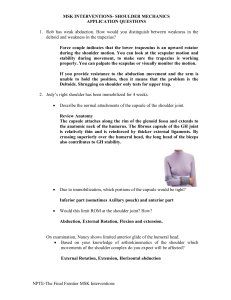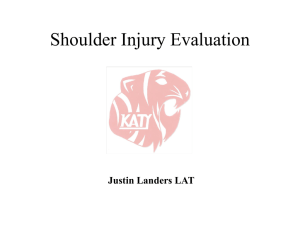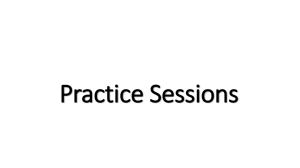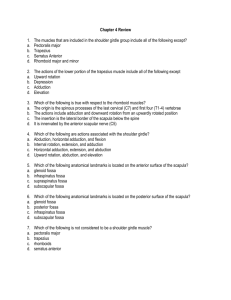ShoulderBIo - 34-601ClinicalAnatomy-FA14
advertisement
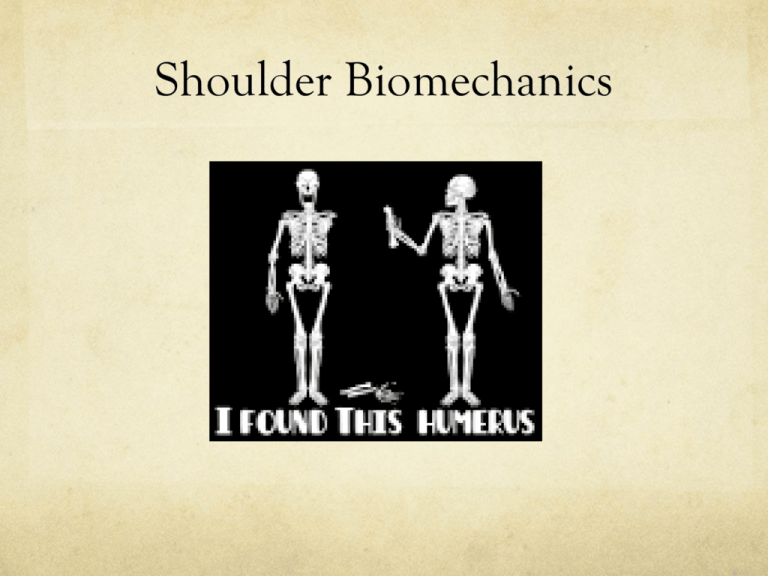
Shoulder Biomechanics SC Joint Sternoclavicular and Acromioclavicular Joints Saddle-type, but functions as ball & socket 4 ligaments Strong, but MOBILE ROM=60° elevation and 25-30° anterior and posterior movement AC Joint Plane synovial articulation 4 ligaments Axioappendicular muscles cause acromion of scapula to rotate on acromial end of clavicle, which increases scapulothoracic joint movement Glenohumeral Joint (scapulohumeral &scapulothoracic) Ball & socket synovial joint WIDE ROM, mobile, UNSTABLE Cavity only accepts 1/3 of humeral head Held in cavity with rotator cuff muscles 3 ligaments Most freedom in body Lateral rotation of humerus increases abduction ROM Elevation & Depression Clavicular elevation /depression(SC) Clavicular Elevation (SC joint) Subtle anterior/posterior tipping (AC) Subtle internal/external rotation (AC) Upward & Downward Rotation (abd/add) 2:1 humoral:scapular Upward/downward rotation (AC) Clavicular elevation/depression (SC) Subtle posterior/anterior rotation (SC) Protraction & Retraction Clavicular protraction/retraction (SC) Subtle internal/external rotation (AC) Winging Excessive internal rotation (AC) https://www.youtube.com/wa tch?v=rRIz6oOA0Vs Scapula loss of contact with thorax, medial border prominence results Winging Upward Rotation (AC) Protraction (SC) Group 1 Group 2 Group 3 Group 4 Trunk to Head Trunk to scapula Trunk to Humerus Shoulder Girdle to Humerus SCM Subclavius Scapular Movement Elevation Depression Protraction Retraction Upward Rotation Downward Rotation Trapezius Levetor scapulae Serratus anterior Rhomboids major & minor Pectoralis minor Latissimus dorsi Pectoralis major Deltoideus Subscapularis* Supraspinatus* Infraspinatus* Teres minor* Teres major Muscles Producing Movement Trapezius (superior part) Levator Scapulae Rhomboids Pectoralis major (inferior sternocostal head) Latissimus Dorsi Trapezius (inferior part) Serratus anterior (inferior part) Pectoralis minor Serratus anterior Pectoralis major/minor Trapezius (middle part) Rhomboids Latissimus dorsi Serratus anterior (inferior part) Trapezius (superior part) Trapezius (inferior part) Latissimus Dorsi Levator scapulae Rhomboids Pectoralis minor Pectoralis major (inferior sternocostal head) Tests: Hawkins-Kennedy Test Neer Impingement Test Research Article Evaluated the effectiveness of FES in shoulder subluxation and pain for patients who have developed hemiplegia due to stroke Shoulder pain measured during resting, passive range of motion (PROM) and active range of motion (AROM) using visual analog scale (VAS) 50 patients with shoulder subluxation and shoulder pain randomly split into either the study group or the control group FES applied to supraspinatus and posterior deltoid muscles Study groupconventional rehabilitation therapy and applied FES Control group conventional rehabilitation therapy Results decreased subluxation levels in the study group compared to the control group Conclusion Conventional therapy with FES is more beneficial than just conventional therapy alone when examining shoulder subluxation Shoulder Instability Most common are anterioinferior capsololabral auvlsions (Degen,2013), more commonly known as Bankart Lesions Glenoid Bone Grafting Bristow Coracoid Transfer Latarjet Coracoid Transfer (subscapularis) References 1) Degen, R. M., Giles, J. W., Thompson, S. R., Litchfield, R. B., & Athwal, G. S. (2013). Biomechanics of Complex Shoulder Instability. Clinics In Sports Medicine, 32(4), 625-636. doi:10.1016/j.csm.07.002 2) Itoi E, Lee SB, Berglund LJ, et al. (2000). The Effect of a Glenoid Defect on Anteroinferior Stability of the Shoulder After Bankart Repair: a cadaveric study. J Bone Joint Surg Am,82(1), 35–46. 3) Koyuncu, E., Nakipoglu-Tuzer, G., Dogan, A., and Ozgirgin, N. (2010). The effectiveness of functional electrical stimulation for the treatment of shoulder subluxation and shoulder pain in hemiplegic patients: A randomized controlled trial. Disability and Rehabilitation, 32(7), 560566 4) Moore, K., Agur, A., and Dalley, A. . (2015). Essential Clinical Anatomy. Lippincott Williams & Wilkins, 5, 465-69 5) Netter. F. (2014). Atlas of Human Anatomy. Saunders Elsevier, (6), 405-411, 417 6) Tortora, G., Derrickson, B. (2012) Principles of Anatomy and Physiology. Biological Science Textbook Inc, 13, 614-615.
